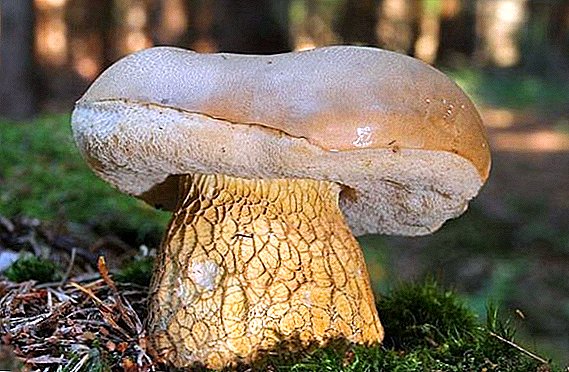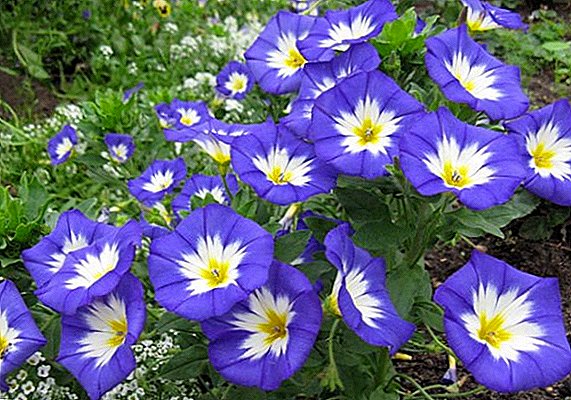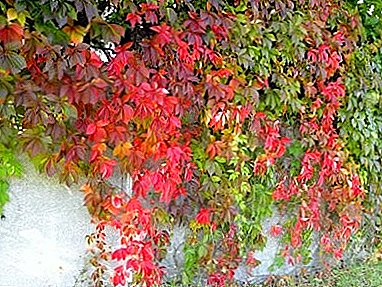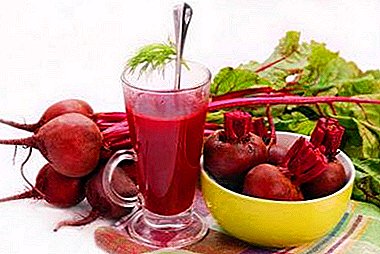 Mother nature never ceases to amaze us with how harmoniously everything fits together in it, and how unnecessary, at first glance, the elements turn out to be an important part of the living organism of the whole planet. A perfect example of a combination of opposites is mistletoe, a plant that for thousands of years has been used by skilled herbalists to cure all sorts of ailments. In this article we will tell you what mistletoe is, what healing properties it has, how to use it, and for some diseases. In addition, we will share the secrets of making all kinds of tinctures, ointments and decoctions from this plant and tell you where to look for mistletoe, how to harvest and store it.
Mother nature never ceases to amaze us with how harmoniously everything fits together in it, and how unnecessary, at first glance, the elements turn out to be an important part of the living organism of the whole planet. A perfect example of a combination of opposites is mistletoe, a plant that for thousands of years has been used by skilled herbalists to cure all sorts of ailments. In this article we will tell you what mistletoe is, what healing properties it has, how to use it, and for some diseases. In addition, we will share the secrets of making all kinds of tinctures, ointments and decoctions from this plant and tell you where to look for mistletoe, how to harvest and store it.
Botanical description: description
This plant belongs to the genus of mistletoes of the same name and is considered parasitic. Mistletoe does not grow by itself - it, as a rule, chooses a host tree for itself, becomes stronger in it with the help of roots penetrating the bark of this tree, and develops directly on it. 
However, it cannot be said that the plant chooses its place of residence, since its seeds are carried by birds, however, the green parasite also has preferences. Most often you can find mistletoe on such trees as oak, linden, poplar, acacia, willow, and even an apple tree, pear, plum and fir with pine.
Mistletoe is often called a shrub than grass, and the reason for that is the size to which it grows. The stem of a plant can reach a length of more than 1 m, and a stalk of 20 cm will be minimal.
Stems intertwining, form something remotely resembling a nest or a ball of twigs. As a rule, the stems have a green color, it is possible impurity brown. Despite the appearance of mistletoe bushes, they are not durable.
In addition to the stems, the plant has leaves of an oval shape and a pale green color, their length reaches no more than 5 cm. 
Did you know? Scandinavian myths say that mistletoe symbolizes truce. The enemies, seeing each other under this plant, pledged to spend the day in the world. Under the mistletoe can come and people who are in a quarrel - it is believed that then in their relationship peace will certainly come. Lovers should at least once kiss under a bush to make their love stronger. In addition, the shrub can become a talisman for the house and protect the home from detractors - just hang a bundle of mistletoe over the entrance.
The flowering of mistletoe begins in March, at this time green-yellow flowers appear on it. And by August-September, ripe berries can be seen on the branches - they are rather small, no more than 1 cm in diameter, usually spherical or slightly elongated.
It is with the help of these berries that the parasite plant spreads: the birds eat the fruit, after which the seeds come out with the droppings.
Mistletoe bushes can be seen in many European countries, as well as in the East or in Asia. The plant avoids the northern regions, but in the south of the Russian Federation, in the Ukrainian and Belarusian forests it is quite possible to meet mistletoe. 
Chemical composition
The use of plants in folk medicine is explained by the fact that there are many useful biochemical substances in it. White mistletoe is famous for its content of gamma-aminobutyric acids, acetylcholine (they are in mistletoe shoots), as well as choline, which is found in the fruits and leaves of the plant.
The evergreen parasite is rich in terpenoids - alpha-amirins and beta-amirins, betulinic acid, ursulinic acid, and in addition saponin triterpene - emuteroside, alkaloids, among which you can find tyramine and lupanin.
Present in the plant are flavonoids contained in the flowers and leaves of mistletoe and represented by isorhamnetin, quercetin, ramnetin. Mistletoe is rich in histamines and organic acids - in particular, coffee and chlorogenic, as well as vitamins of group E and mannitol. 
Medicinal properties
Apply evergreen parasite plant for medicinal purposes began in the I century AD. e. and considered this plant practically a panacea that can save a person from all diseases and ailments. Separately noted the antidote property of the plant.
Druids, healers of ancient times, had the belief that mistletoe helps to rid the human body of all poison. But now the population of southern France believes in it.
Did you know? For many years, white mistletoe was considered to be an excellent way to cope with epileptic seizures, and not because of its medicinal properties, but because the balls woven from the stalks of the plant, despite their fragility, never fell to the ground. Therefore, people suffering from epilepsy needed to take an infusion from a plant and carry a twig with it.
Modern folk medicine uses this parasitic plant as a remedy for high blood pressure. It also deals with bronchial asthma, atherosclerosis, diseases of the female organs, neuralgic ailments, trophic ulcers of the extremities. 
Beneficial effect of mistletoe on the cardiovascular and central nervous system.
In addition to mistletoe, plants such as European Zyuznik, Lily of the Valley, Hop, Honeysuckle, Chumiz, Hawthorn, Chervil also have a positive effect on the cardiovascular system.
For disorders of the gastrointestinal tract, it is useful to drink weak decoctions from the mistletoe shrub, in particular, this applies to such disorders as hemorrhoids, dysentery and diarrhea.
Periodic use of the mistletoe drug inside helps reduce or stop internal bleeding.
For any diseases: indications for use
There are many diseases in which it is recommended to use white mistletoe. 
So, products from evergreen plants are shown to people diagnosed with:
- neuralgic diseases;
- lymphosarcoma;
- bronchial asthma;
- impotence;
- cancer of the stomach, kidneys, liver and duodenum;
- atherosclerosis;
- varicose veins;
- enuresis;
- neuroblastoma.
Evergreen shrub is also useful for people with:
- fractures;
- leukemia;
- lymphogranulomatosis;
- hemorrhoids;
- diabetes;
- tuberculosis;
- epilepsy;
- papilloma;
- neuroma;
- lymphoma;
- hypertension.

In addition, it will have a beneficial effect on the body with bruises, belyah and uterine bleeding.
Possible harm
Undoubtedly, mistletoe has already managed to surprise you with its healing properties, but there is one very important clarification: this plant is in no case allowed to drink or take it externally on an ongoing basis.
This is due to the fact that in addition to nutrients in the evergreen parasite also contains toxic substances. Its constant use will cause intoxication of the body, since harmful substances are not excreted with urine or other body fluids.
Important! If treatment with mistletoe lasting one course did not help you, do not start a second course right away. Wait at least 30 days, and only after that begin another course of treatment.

If you have exceeded the norm and consumed more of the mistletoe product during the day (both externally and internally), then irritation may soon appear:
- on the skin - if you overdo the compress or took too much juice or ointment for the session;
- on the internal organs - respectively, if you exceed the norm drunk decoctions, tinctures or tea.
Contraindications
Before you use mistletoe, make sure that you do not have any of the above diseases, because in the case of their presence, at best, it will be difficult to achieve a positive result after eating products from mistletoe. And at worst - the plant will harm your health and only aggravate its condition.
Taking foods from an evergreen is strictly forbidden if you have low blood pressure, pathological kidney disease, or reduced thyroid function. A plant allergy is also a contraindication to use. 
It is strictly forbidden to use mistletoe for women in the position, as the plant is capable of provoking a miscarriage.
During pregnancy, it is important to be careful with such plants that can cause miscarriage, like stevia purple, dodder, onions, lovage, primrose.
Collection, preparation and storage of raw materials
It is best to stock up on raw materials for making tinctures, tea and other mistletoe products in winter or late autumn when there are no leaves on the trees. After all, we remember that a parasitic plant is evergreen, which means that it is much easier to notice on bare branches.
When you find a mistletoe ball, arm yourself with shears or special hooks - these devices will help you get the ball that is high on the tree, as well as protect you from possible injuries.
You can collect as the stems with shoots, and the fruits of mistletoe, but do not eat them - you can get poisoned. 
And the sheets and twigs need to be dried. For this you need a sheet or any flat surface on which you lay out the collected raw materials. You can cover the surface with a cloth or paper.
If you need to dry the mistletoe faster - use the oven, but be careful: the temperature should not exceed 50 ° C.
After the materials are dried, place them in a special bag made of cloth (preferably loose, otherwise the raw materials will suffocate). Leave the mistletoe collected in the bag in a place where ultraviolet light does not penetrate. It is advisable to air the room from time to time.
Shelf life of the plant is 24 months. After this period, we recommend to re-assemble raw materials. 
Medicinal Drug Recipes: Application
To reveal all the beneficial properties of the plant, you need to learn how to apply it depending on the disease and how to prepare the product correctly. We share with you easy-to-cook recipes so that health care with mistletoe doesn’t seem difficult and does not take much time.
Tea
To make a drink, you will need mistletoe branches. It is necessary to grind them, and take already crushed raw materials in the amount of 1-1.5 teaspoons, and then add cold water to such chips - 1 cup will be more than enough.
Drink container must be infused overnight, and then strain the liquid through cheesecloth. You can drink tea both cold and warm.
If you do not have the disease and drink the drink as a preventive measure, then you will be sufficient to drink only 1 cup (250 ml) per day. 
If you need mistletoe tea as a medicine, you will need 3 such cups a day, but not more.
The drink is useful to drink with sclerosis, hormonal disorders and delays of the menstrual cycle in women. Tea must be used on a course of 21 days.
Tincture
To prepare the mistletoe tincture, you will need 0.5 liters of vodka and only 50 g of dried raw materials. The plant must be poured with alcohol, tightly closed and put away in a dark place for a month. After that, it will be ready for internal use. The rate is 40 drops of tincture no more than 4 times a day.
Helps this drink with high nervous excitability. It also helps to cleanse the blood vessels and normalize metabolism. A good remedy is tincture for the prevention of tumors, since it inhibits the process of dividing such cells. 
Decoction
The decoction of the plant is used inside. To prepare it, take 1 dessertspoon or 2 teaspoons of dried and finely chopped mistletoe (both leaves and stems will do), pour 250 ml of water and put on the fire.
Boil the infusion for 1 minute, remove from heat and leave the liquid for half an hour. After this time, strain the liquid with gauze or a bandage folded several times. It is necessary to drink broth three times a day after meals, for 1 reception it is necessary to drink no more than 1 tablespoon of broth.
Infusion
This product is usually applied externally. To prepare it, take 1 tablespoon of dried mistletoe, pour boiling water (250 ml) and leave the liquid for 1 hour. Strain before use. It can be used for compresses or lotions. 
The juice
The juice is extracted quite simply: from the leaves of the plant. It will be enough to use the method of cold pressing, that is, just squeeze the liquid from the leaves.
It is necessary to use the juice with extreme caution, and it is suitable for the treatment of wounds, tumors, ulcers. You can also bury their ears, using for 1 reception no more than 2 drops in each ear 3 times a day. Take the juice inside is impossible.
Ointment
To prepare the ointment, you will need not the shoots and branches of the plant, but the very fruits that appear on the mistletoe at the end of summer. In addition to them, you have to stock up on pork fat.
Important! Fruits must be fresh, so it is necessary to prepare the ointment early - in early autumn.
Fruits should be cut very finely, and then combined with pork fat - in no case do you need to heat it. 
The number of ingredients depends on how much ointment you need, so be guided by its consistency - it should not be liquid or too thick.
This mistletoe product is especially relevant in the winter, cold season, as it copes well with frostbite of the limbs, nose, or ears. To restore health to the skin affected by cold, a compress is made with a prepared ointment. Keep it best for the night for 2-3 days.
Regardless of what method of using mistletoe you prefer and for what purpose you will use it, remember that you need to handle it with care and not abuse the drugs from this evergreen parasitizing plant.












